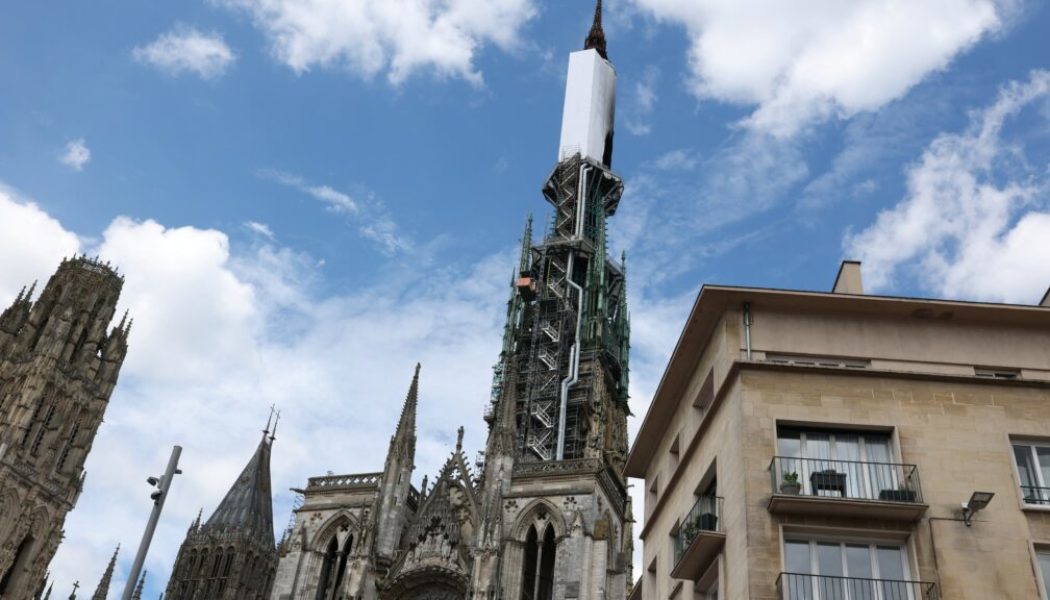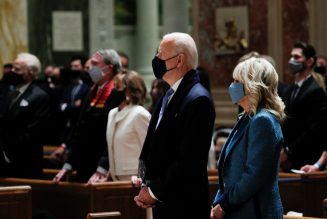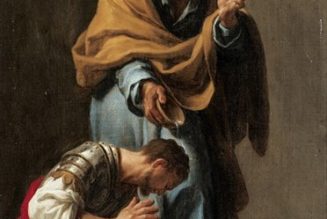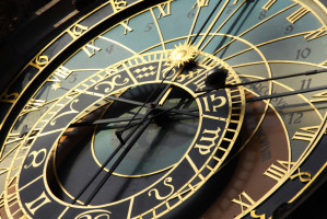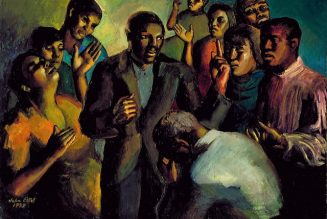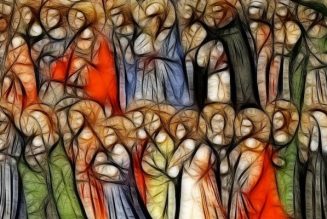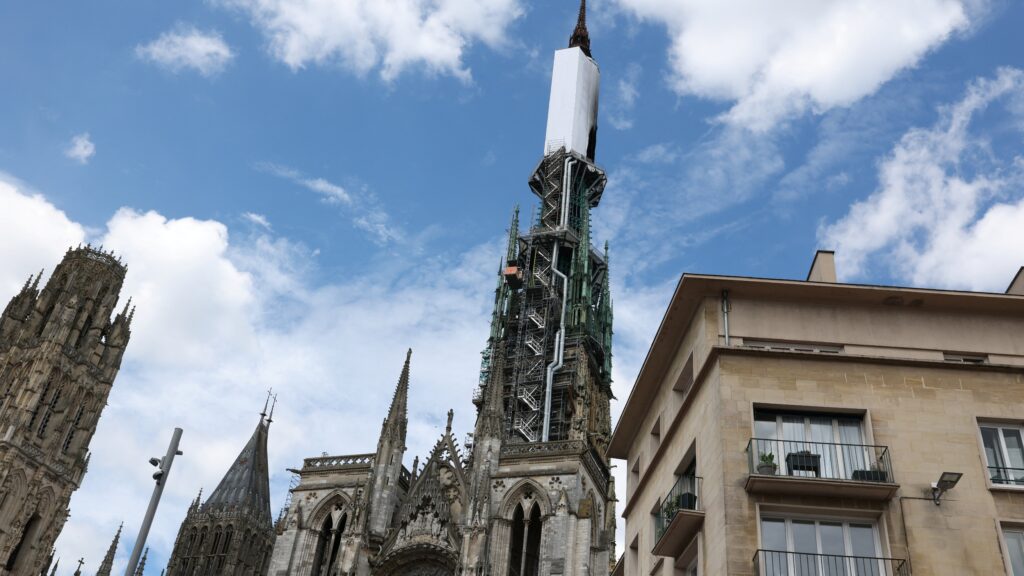
PARIS (OSV News) — The capital of France’s Normandy region held its breath on July 11 as reports and social media pictures spread that the Rouen Cathedral’s spire was on fire, causing the building to be evacuated.
At midday, flames shot up around the spire, accompanied by heavy smoke, sending Rouen’s inhabitants into a panic and bringing back memories of the Notre Dame Cathedral fire on April 15, 2019, in Paris.
Around 70 firefighters brought the blaze under control in less than two hours, much to everyone’s relief. “In the end, there was more fear than harm,” Archbishop Dominique Lebrun of Rouen told OSV News July 12. “Today, the cathedral is reopened,” he said.
Rouen Cathedral is the tallest church in France. It was in Rouen that St. Joan of Arc was burned alive in 1431, during the Hundred Years’ War between France and England. As in Paris, the Seine River flows through the city.
“The fire started inside the spire, right at the edge,” Archbishop Lebrun said. “But in the end it only burned a large plastic casing from the restoration work currently underway. The rest was untouched.” The origin of the fire, thought to be accidental, is not yet known.
“I am very grateful to the entire rescue chain, including the sacristans, firefighters, contractors, police and civil authorities, who acted with great professionalism,” Archbishop Lebrun told OSV News.
Rouen Cathedral’s spire is made of metal, making it more resistant to flames. “It was built in cast iron in the 19th century,” the archbishop explained. “In 1822, a fire caused by lightning had destroyed the previous wooden spire. To avoid this, it was decided to build a new one in cast iron,” he said. The cathedral is famous for its three towers, each with a different style.
The new spire brought the entire cathedral to a height of 495 feet, which was exceptional at the time. From 1876 to 1880, the spire made Rouen Cathedral the world’s tallest building until the completion in 1880 of the one in Cologne, Germany, reaching 515 feet. The spire of Notre Dame in Paris, completed in 1859, reached 315 feet.
At the time the Rouen Cathedral spire was constructed — just a few years before the construction of the Eiffel Tower in Paris — metal buildings were gradually becoming fashionable.
“The cathedral and its spire were then damaged by Allied bombing during World War II in 1944,” Archbishop Lebrun recalled. “Then, in the (19)’70s, the spire was reinforced with a steel structure, making it quite resistant.”
However, it was not resistant to tough weather conditions in the northern French Normandy region. The winds and the proximity of the sea damaged the cast iron spire as years passed. The extent of deterioration led to the launch — in 2016 — of a lengthy restoration project, set to last several more years. “Tens of thousands of bolts have been broken and must be replaced,” Archbishop Lebrun told OSV News.
The work has now been suspended, the archbishop added.
“We must first heal the wounds caused by the fire. I am thinking first of the four workers who were on site. They were intoxicated by the smoke and psychologically shocked. I saw this for myself when I met them immediately after the fire. I am still worried about them,” Archbishop Lebrun said.
“The spire was completely covered in smoke and heat was released from the metal parts,” he said. “Specialists need to check all this before any further work is carried out.”
The Rouen Cathedral is also particularly famous for being depicted in a series of 30 paintings by France’s star impressionist painter Claude Monet between 1892 and 1894, just a few years after the completion of the cast iron spire. Paris’ Musée d’Orsay has some paintings of the series on permanent display.
Like all French church buildings, Rouen Cathedral is owned and maintained by the French government. The Ministry of Culture is financing the restoration work.
French Minister of Culture Rachida Dati visited the cathedral on the afternoon of July 11 to inspect the fire damage. As she was finalizing her press briefing in front of the Gothic building, she turned to the cathedral’s rector, Abbot Alexandre Gérault, and quipped: “In these troubled times, you will pray for us.”
Her comment quickly made headlines in the tense political context of the country’s July 7 elections that left France without a parliamentary majority and left President Emmanuel Macron reluctant to appoint a new prime minister immediately amid political turmoil and the far-left’s surprising wins.
Caroline de Sury writes for OSV News from Paris.
